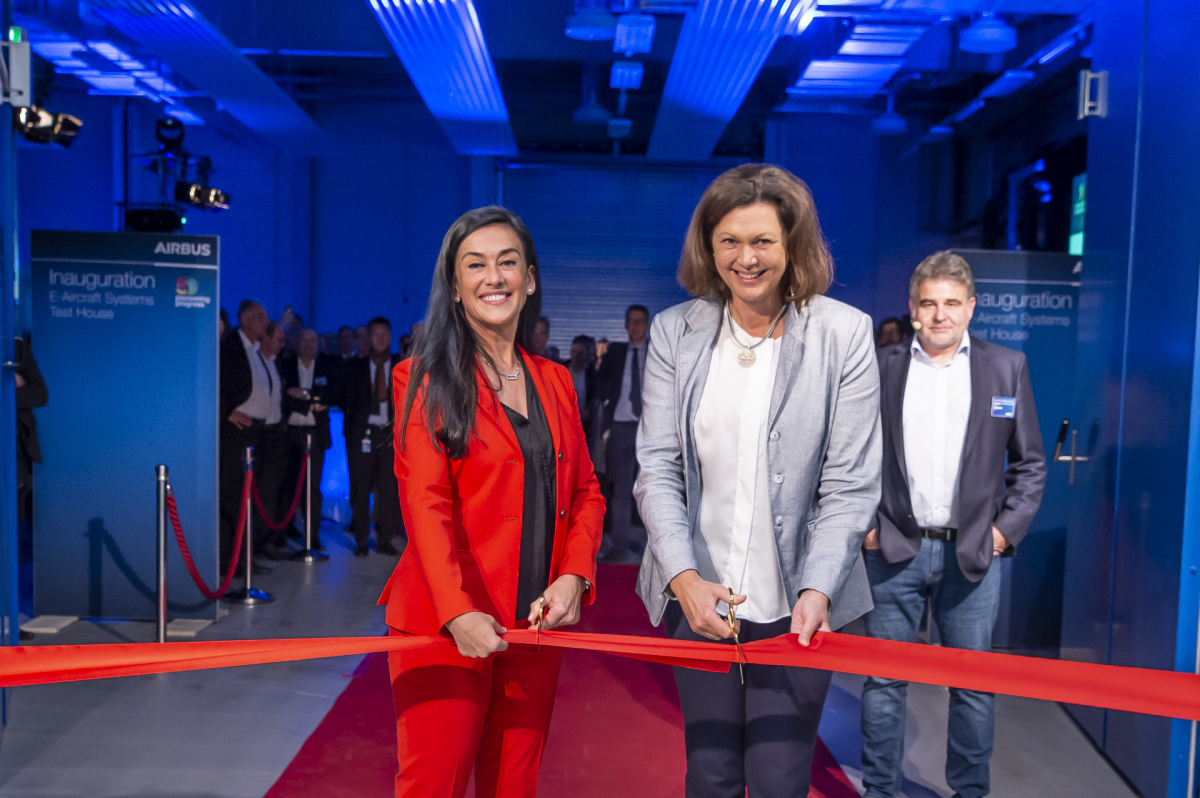Airbus has officially opened its E-Aircraft Systems House test facility at its Taufkirchen/Ottobrunn site. With a surface area of more than 3,000 m2, it is dedicated to research in hybrid and electric propulsion technologies as well as alternative fuels.
Announced during the last Paris Air Show, the inauguration of the Airbus research center on hybrid and electric propulsion technologies took place this Friday, October 25, in presence of Grazia Vittadini, Airbus Chief Technology Officer, Ilse Aigner, President of the Bavarian State Parliament, and Dirk Hoke, Airbus Defense and Space CEO. With a surface area of more than 3,000 m2 including 2,500 m2 dedicated to testing, the E-Aircraft Systems House center is located on the Airbus site in Taufkirchen / Ottobrunn. “We now have the infrastructure to move the transition to emission-neutral flight forward at an even faster pace”, said Grazia Vittadini. Indeed, it is the first test center of its kind in the world capable of integrating and testing complete systems for propulsion technologies and alternative energy sources - electric motors for drones, hybrid engines, alternative fuels such as hydrogen, etc. The new Airbus test center will be able to get on with the E-Fan X technology demonstrator that should fly in 2021.
This BAE RJ100 regional four jet engines will see one of the engines replaced by an electric motor with a power of 2 megawatts. Once the propulsion system has matured, a second electric motor will be installed. Alongside Airbus, Rolls-Royce is also working on the integration of the fan with the existing nacelle and the electric motor. The British engine manufacturer has already performed its own tests on the hybrid engine control system at Derby. It is also in this same city that is conducted the wind tunnel test of a 1/8 scale model of the RJ100 to check the aerodynamic characteristics and flight qualities of the aircraft. For its part, the 2.5 MW generator will be built at the Trondheim site, Norway, while in Indianapolis the “full scale flight representative thermal rig” tests are currently being conducted. Finally, the 3 kilovolts distribution network was tested on short circuits in Prague. In Toulouse, battery tests are carried out to ensure that they meet the requirements of both the FAA and the EASA. Airbus is responsible for the integration of the entire electrical propulsion system in the aircraft, the lithium-ion battery pack, the AC/DC distribution network of 3 kilovolts, as well as harnesses and power distribution.

